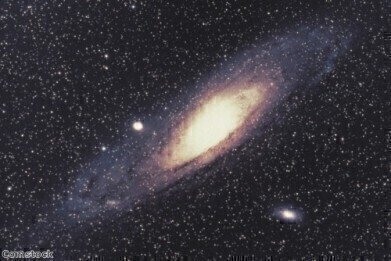-
 Cancer researchers team up with astronomers
Cancer researchers team up with astronomers
News & Views
Cancer researchers team up with astronomers
Feb 21 2013
Cancer researchers have joined forces with astronomers to identify biomarkers that signal a cancer's aggressiveness.
In a study published by the British Journal of Cancer, experts from the Cancer Research UK Cambridge Institute and the Department of Oncology and the Institute of Astronomy at the University of Cambridge adapted techniques used by astronomers to pick out indistinct objects in the sky.
These approaches were applied to immunohistochemistry, which depends on pathologists being able to recognise subtle differences in the staining of tumour cells down a microscope.
As a result of the findings, the tradition of pathologists looking down a microscope to spot key differences in the staining of tumour samples could be left behind in favour of new approaches.
To test the new approach, researchers used it to measure the levels of three different proteins associated with more aggressive cancers, throughout tumour samples from over 2,000 breast cancer patients.
Study lead author Dr Raza Ali, a pathology fellow from Cancer Research UK’s Cambridge Institute at the University of Cambridge, said: "We’ve exploited the natural overlap between the techniques astronomers use to analyse deep sky images from the largest telescopes and the need to pinpoint subtle differences in the staining of tumour samples down the microscope.
"The results have been even better than we’d hoped, with our new automated approach performing with accuracy comparable to the time-consuming task of scoring images manually, after only relatively minor adjustments to the formula."
Senior author Professor Carlos Caldas, also from Cancer Research UK’s Cambridge Institute at the University of Cambridge, commented on the discovery, claiming that modern techniques are providing the medical world with key insights into new genes and proteins.
"Already this new automated approach means we can now analyse up to 4,000 images a day, helping streamline the process of translating these discoveries into the clinic," he went on to say.
Posted by Ben Evans
Digital Edition
Lab Asia 31.2 April 2024
April 2024
In This Edition Chromatography Articles - Approaches to troubleshooting an SPE method for the analysis of oligonucleotides (pt i) - High-precision liquid flow processes demand full fluidic c...
View all digital editions
Events
May 05 2024 Seville, Spain
InformEx Zone at CPhl North America
May 07 2024 Pennsylvania, PA, USA
May 14 2024 Oklahoma City, OK, USA
May 15 2024 Birmingham, UK
May 21 2024 Lagos, Nigeria



.jpg)













